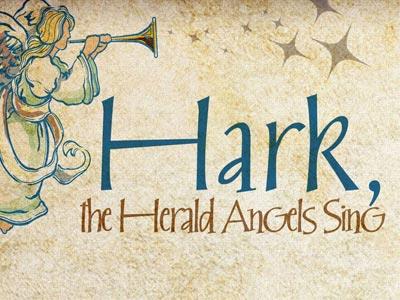-
Developing A Christmas Heart
Contributed by S Henriques on Nov 28, 2017 (message contributor)
Summary: "Christmas Hearts" are a custom in Denmark, but believers world-wide can develop true Christmas Hearts to celebrate the birth of Christ.
Developing a Christmas Heart
Luke 2:15-20
Christmas is observed literally all over the world, and the traditions and customs are as varied as the countries in which they are found. In Australia, for example, Santa’s sleigh is pulled by eight white kangaroos. Christmas dinner is eaten outdoors and is followed by a visit to the beach or a game of cricket. In Germany, children decorate their Christmas lists with pictures and then leave them on the windowsill overnight, weighed down with a little sugar so they won’t be missed by Father Christmas.
The Christmas season begins December 16 in Mexico, Honduras and El Salvador. This is the first of nine nights of a celebration called Les Pasadas. Pasada is the Spanish word for lodging. The Christmas time pasadas are colorful processions or parades that re-enact Joseph and Mary’s search for an inn. At the head of each procession is a child dressed as an angel, followed by two more children dressed as Joseph and Mary. More angels, shepherds and three kings follow. Everyone carries a lit candle. As they walk, the participants sing special carols.
Eventually the procession stops at the house of a friend or family member. Joseph and Mary knock at the door, and ask for a room for the night. "Go away!" the people behind the door say. "My wife is with child and needs a place to rest," Joseph says. "Go away!" the people in the house shout. Finally Joseph reveals the fact that Mary is about to give birth to the Christ Child. The door opens and the procession goes in. After a prayer is said, the party begins. Piñatas, special candies, sandwiches, fruit punch, singing and games highlight the occasion.
A special tradition in Denmark is something called the “Christmas Heart,” an interwoven paper basket in the shape of a heart. It is made of red and white paper, which happen to be the colors of the Danish flag. These paper hearts are put on the Christmas tree or used as mobiles, and they are filled with candy and other goodies. The Christmas Heart is a traditional Danish symbol. Most Christmas trees, including the big tree in Copenhagen’s Town Hall Square, are decorated with red and white woven paper hearts.
It is believed that the first Christmas Heart may have been made by Hans Christian Andersen, who gave us 156 fairy tales, including “The Emperor’s New Clothes,” “The Ugly Duckling,” and others. The very first one he made is still on display at his home in Denmark. April 2, 2005 marks the 200th anniversary of Hans Christian Andersen’s birth, and the logo for the celebration appropriately features a red heart with a fold right down the middle. It is said that the meaning of the Christmas Heart is to remind us of the love of Jesus towards all humanity, and that the candy inside the baskets represents the Christ Child inside the manger.
The Danish Christmas Heart is a piece of Christmas tradition that we do not practice here in the United States that much. Yet I wonder if we might not begin a greater tradition, one of making absolutely certain that each of us develops a true “Christmas Heart,” one deep inside us that won’t fade or go away. Harlan Miller once expressed a wish that “we could put up some of the Christmas spirit in jars and open a jar of it every month.” That might be a good thing, but it’s just wishful thinking. Wouldn’t it be much better if we could develop a true Christmas Heart instead?
So what is a Christmas heart? Let’s take a look at the original story, realizing that the real Christmas story is one that touches us in our hearts.
1. A Christmas heart is an eager heart, Luke 2:15-16
What thoughts must have flown through the minds of those shepherds right after the angels left them? We can’t even begin to imagine it. I’m sure there must have been several seconds when no one said anything. Then perhaps they all found their voices at the same time, and they said to each other, “Let’s go see this!”
Think of the things they must have seen, from beginning to end! It was an ordinary night, like hundreds and hundreds they had experienced before, when suddenly the darkness of the night sky was split with the brilliance of the glory of God and the appearance of the angel. The angel announced the birth of the Christ Child, and suddenly, “a great company of the heavenly host appeared with the angel, praising God and saying: Glory to God in the highest, and on earth peace to men on whom his favor rests.” What glorious sights for their mortal eyes to behold—things none of them had ever seen before—things none of us have ever seen in our entire lifetimes.

 Sermon Central
Sermon Central



